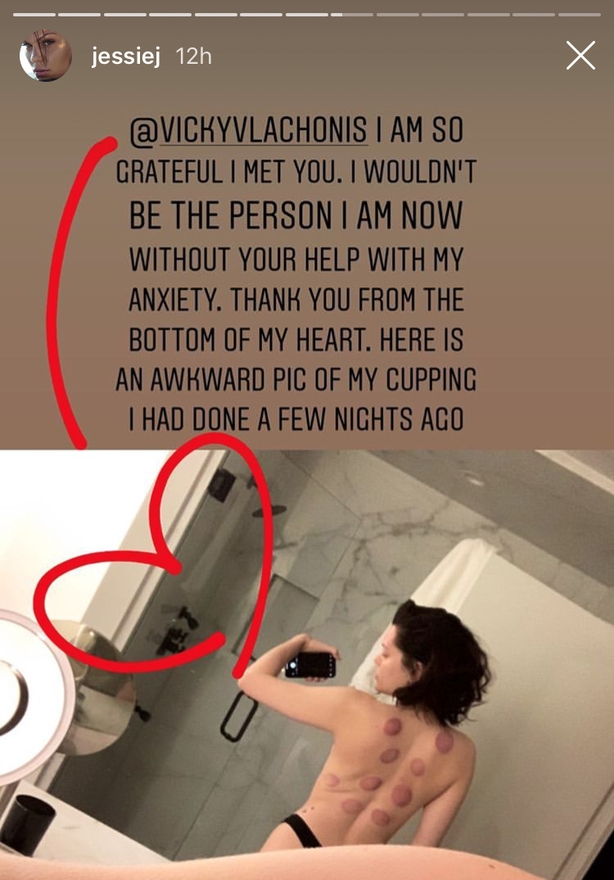She’s spent the last few months looking super loved up with her new beau Channing Tatum, but behind the scenes, Jessie J has revealed she’s been suffering with mental health issues.
On Instagram Stories, the 'Who Are You' songstress, 31, spoke candidly about how a type of alternative therapy has helped her to overcome her battle with anxiety in recent months.

The singer shared a photo of her back covered in red, circular marks, a telltale sign of cupping therapy, an ancient form of alternative medicine in which a trained practitioner places special suction cups onto your skin.
The singer thanked her therapist Vicky Vlachonis, writing: "I wouldn’t be the person I am without your help with my anxiety."
How does cupping therapy work?
The ancient therapy is based on the belief that physical health issues and illness can be caused by poor circulation and energy flow through the body.
The therapy can be performed in different ways, but traditionally, an acupuncturist dips a cotton ball in alcohol, lights it on fire and places it inside a glass cup to create suction.
The warm cups are then placed on certain points of a person’s body, where they tug against the skin and promote blood flow.
This typically leaves circular-shaped bruises on the body, which are caused by the cup’s vacuum breaking small capillaries in the tissue. Don’t be alarmed though, the practice isn’t as painful as it looks and the red marks usually fade in a few days.
There are two different types
Cupping can either be dry or wet. Dry cupping involves simply creating suction on particular points on the patient’s body using warm cups, as described above.
Wet cupping, meanwhile, is a bit more invasive. A therapist makes small incisions in the skin before starting the suction, which removes some of the person’s blood during the procedure.
What are the benefits?
Cupping is particularly popular with athletes as it’s thought to draw blood to an affected area, reducing muscle soreness and speeding the recovery process. At the last Olympic Games, swimmer Michael Phelps notably sported the deep-purple marks on his body.

Additionally, some people claim that it can treat chronic back pain, keep injury at bay and, in the case of Jessie J, even reduce stress and anxiety.
However, it’s important to note that cupping lacks rigorous, scientific studies to back up these anecdotal claims, so there is no real way of knowing whether they’re down to a placebo effect.
In an interview, Rachel Vreeman, MD, director of research at the Indiana University Centre for Global Health told Health.com that we shouldn’t suspend our disbelief just yet.
"There are no health benefits to cupping documented in the scientific literature," she said.
"The only study I have seen… with any impact related to cupping is one that rigorously examined various therapies for back pain, and suggested that any impact from cupping was likely related to a placebo effect."
However – when administered by a qualified acupuncturist – cupping isn’t dangerous and shouldn’t be painful, so if you’re really curious about seeing if it works for you, the best way to find out is to book a session.

